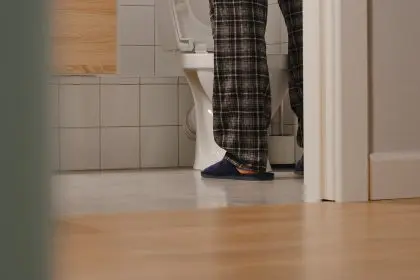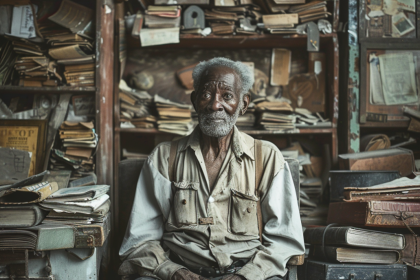You’ve heard the saying “dress for the job you want, not the job you have,” but what if your wardrobe is actually rewiring your brain? That blazer hanging in your closet isn’t just fabric and buttons – it’s a psychological power tool waiting to be activated. And that favorite old sweater with the subtle stain? It might be sabotaging your confidence in ways you never imagined.
The connection between what we wear and how we feel has fascinated researchers for decades, but recent discoveries have taken this relationship to an entirely new level. Your clothes aren’t just sending messages to others – they’re sending powerful signals to your own brain, potentially transforming everything from your negotiation skills to your creative problem-solving abilities. Let’s explore the fascinating science behind how changing your wardrobe might be the most underrated confidence hack available.
The hidden psychology behind your clothing choices
When you get dressed each morning, you’re doing much more than simply covering your body – you’re setting up your psychological framework for the entire day. This phenomenon, which psychologists call “enclothed cognition,” suggests that your clothes can fundamentally change how you think, feel, and function.
In a groundbreaking study at Northwestern University, researchers found that people performed significantly better on attention-related tasks when wearing a lab coat described as a “doctor’s coat” compared to the exact same coat described as a “painter’s coat.” The physical garment was identical, but the mental association created entirely different cognitive outcomes. This reveals something profound – clothing affects us through the symbolic meaning we attach to it, not just its physical presence.
This mental association works in multiple directions. Just as wearing “doctor’s clothing” might make you more attentive, putting on “power clothing” can trigger hormonal changes that boost confidence. Research has detected actual shifts in testosterone and cortisol levels when people wear clothes they associate with authority and competence. Your navy suit isn’t just projecting confidence to the room – it’s literally changing your body chemistry.
The phenomenon extends beyond professional clothing. That ratty college sweatshirt might feel comfortable, but it could be triggering associations with your younger, less accomplished self. Clothing carries emotional memories and identity markers that subconsciously shape how we perceive ourselves in any given moment.
Even color psychology plays a role in how clothing affects our mental state. Red has been shown to increase perceived dominance and attractiveness, while blue often enhances perceptions of trustworthiness. Black conveys authority but can sometimes read as unapproachable. These effects work on observers but also reflect back on the wearer, creating a complex psychological feedback loop.
Understanding this hidden psychology is the first step toward harnessing clothing as a tool for confidence rather than letting it unconsciously undermine your sense of self. Your wardrobe isn’t just about fashion – it’s a collection of psychological triggers waiting to be strategically deployed.
The confidence feedback loop your mirror started
Have you ever noticed how catching a glimpse of yourself looking put-together can suddenly make you stand taller? That’s not vanity – it’s your brain processing visual evidence that confirms your desired identity, creating a powerful confidence feedback loop that can shape your entire day.
When you look in the mirror and see a version of yourself that aligns with how you want to be perceived, your brain experiences a satisfying sense of congruence. This alignment between your actual and ideal self reduces cognitive dissonance and boosts confidence. Conversely, when your reflection shows someone who doesn’t match your internal identity – perhaps looking disheveled when you see yourself as polished – it creates an uncomfortable mental friction that can drain confidence.
This mirror moment triggers a cascade of psychological effects that follow you throughout the day. Research shows that people who feel good about their appearance demonstrate measurably higher levels of self-efficacy – the belief in their ability to accomplish specific tasks. This increased self-efficacy translates into greater willingness to take social risks, speak up in meetings, and pursue challenging opportunities.
The feedback loop continues as others respond to your enhanced confidence. When you carry yourself with greater assurance, people tend to treat you with more respect and attention, which further reinforces your confident self-perception. This cycle can transform a simple wardrobe change into a day-long confidence accelerator.
Interestingly, this process works even without mirrors. The physical sensation of wearing clothes that feel good on your body – proper fit, comfortable yet structured materials – provides continuous tactile feedback that maintains confidence even when you can’t see yourself. The gentle pressure of a well-fitted jacket or the smooth drape of quality fabric creates a constant physical reminder of your put-together state.
The implications are clear – curating a wardrobe that consistently creates positive mirror moments isn’t superficial, but rather a strategic investment in your psychological infrastructure. Those few seconds in front of the mirror each morning can initialize a confidence cascade that transforms your entire day.
Why comfort clothes might be comfort traps
We all have them – those ultra-comfortable go-to items we reach for when we want to feel cozy and relaxed. But while your favorite worn-in joggers might feel like a security blanket, they could be unknowingly undermining your confidence in subtle but powerful ways.
The problem with comfort clothes lies not in the comfort itself, but in the psychological associations they often carry. Many of our most comfortable items are also our oldest, most casual, or least structured pieces – clothing we’d never wear to important meetings or significant events. When we wear these items, we unconsciously adopt the mental state we associate with them, which is typically one of relaxation rather than peak performance.
Research from Columbia Business School examined how formal versus casual clothing affected abstract cognitive processing. Participants wearing formal business attire demonstrated enhanced abstract thinking – the kind needed for creative problem-solving and big-picture leadership – compared to those in casual clothes. The casual clothing, while physically comfortable, actually constrained cognitive patterns in measurable ways.
This doesn’t mean all comfortable clothes are confidence killers. The key distinction is between “comfort as slovenliness” and “comfort as confidence.” True confidence often comes from feeling physically comfortable while still presenting as intentional and put-together. The most effective wardrobe pieces combine physical comfort with visual structure – think soft, stretchy blazers or well-fitted knits rather than baggy sweats.
Many people fall into the trap of creating a false dichotomy between comfortable clothes and confidence-boosting clothes. This either/or thinking leads to closets divided between “feeling good” clothes and “looking good” clothes. The most psychologically effective wardrobe bridges this gap, containing pieces that simultaneously satisfy both needs.
Age and wear also impact how clothing affects our confidence. Items that have lost their shape, developed pilling, or faded significantly send subtle signals of neglect that our brains register as incongruent with success and competence. Even if no one else sees these clothes, we know their condition, and this knowledge affects our self-perception.
The solution isn’t abandoning comfort, but rather redefining it. Investing in high-quality, well-fitted pieces made from comfortable materials allows you to experience physical ease without the psychological downsides of traditional comfort clothes. When comfort and confidence complement rather than compete with each other, your wardrobe becomes a much more powerful tool for psychological well-being.
The unexpected physics of confidence-building garments
Beyond psychology, there’s a fascinating physical dimension to how clothes affect confidence – one that operates through the actual structure and properties of the garments themselves. This sartorial physics creates tangible effects on posture, movement, and presence that directly impact how confident you feel.
Structure in clothing – from shoulder pads to tailored waistlines – actually changes how you stand and move. Well-structured garments gently encourage proper posture by providing subtle resistance against slouching. This physical nudge toward standing straighter triggers a neurological cascade; improved posture increases testosterone and decreases cortisol levels, creating a hormonal profile associated with confidence and reduced stress.
Weight and drape of fabrics affect how we perceive ourselves in space. Heavier fabrics with substantial drape create a sense of groundedness and presence that lighter materials don’t provide. This isn’t just subjective – the physical sensation of weight against the body activates proprioceptors, specialized neural receptors that enhance body awareness. Increased proprioception has been linked to greater confidence in movement and physical presence.
Fit plays perhaps the most crucial physical role in confidence. Clothes that are too tight restrict movement and breathing, triggering subtle stress responses. Conversely, overly loose garments can create a sense of diminishment or hiding. The sweet spot – pieces that skim the body with about a half-inch of ease – allows full range of motion while providing constant tactile feedback about your physical boundaries, reinforcing your sense of presence in space.
Even fabric composition affects confidence through its interaction with your body. Natural fibers that breathe well help regulate temperature, preventing the confidence-killing distraction of overheating or chilling. The microscopic structure of fabric directly impacts skin sensation, with smoother fibers generally creating more positive associations than rough textures that can trigger irritation responses.
Color creates physical as well as psychological effects. Beyond cultural associations, different wavelengths of light actually affect neurological processes. Red stimulates the sympathetic nervous system, potentially increasing energy and confidence for short durations. Blue has been shown to enhance creative thinking by promoting a more relaxed cognitive state. These effects operate through direct photoreception rather than purely psychological association.
Understanding these physical elements allows for more strategic wardrobe choices. Instead of focusing solely on appearance, consider how garments physically interact with your body to either support or undermine confidence. The most effective confidence-building pieces work through multiple channels simultaneously – psychological, social, and physical – to create comprehensive support for your self-assurance.
The identity revolution hiding in your closet
Your wardrobe isn’t just a collection of clothes – it’s a tangible manifestation of how you see yourself and how you want to be seen. Making intentional changes to this collection can trigger profound shifts in identity that extend far beyond appearance, potentially revolutionizing how you navigate your entire life.
Identity theory in psychology suggests that we have multiple “possible selves” – versions of who we might become under different circumstances. Clothing offers a unique opportunity to temporarily embody these possible selves, trying them on both literally and figuratively. When you wear clothes associated with a version of yourself you aspire to be, you begin the neurological process of claiming that identity.
This identity exploration through clothing isn’t superficial – it creates actual neural pathways. Each time you dress as your “confident self” or “professional self,” you strengthen the mental patterns associated with that identity. Over time, these strengthened pathways make it easier to access those aspects of yourself even when not wearing those specific clothes.
Transitional life periods often trigger wardrobe evolution precisely because of this connection to identity. Career changes, relationship shifts, geographic moves, or age milestones frequently coincide with wardrobe overhauls as people seek external representations of their evolving internal identities. These wardrobe updates aren’t just practical – they’re ritualistic affirmations of transformation.
The most powerful wardrobe changes often involve shedding clothes that tie you to outdated versions of yourself. Those items that no longer fit your body or life can create subtle cognitive dissonance each time you see them in your closet. Removing these pieces isn’t merely practical decluttering – it’s a psychological unburdening that creates space for your evolving identity.
Strategic wardrobe building involves identifying key identity markers and ensuring they’re represented in your clothing collection. What visual elements represent core aspects of how you see yourself or want to be seen? These might include color palettes, silhouettes, textures, or specific iconic pieces that serve as anchors for your desired identity.
The transformative potential of wardrobe change is accessible regardless of budget. Identity-affirming updates might involve shopping, but could equally involve alteration, styling innovations, or simply removing items that no longer serve your self-concept. The psychological impact comes from intention rather than expenditure.
From theory to practice: building your confidence wardrobe
Understanding the psychology and physics of confidence-boosting clothes is fascinating, but how do you actually translate these insights into a wardrobe that works for your specific life and goals? The process combines self-reflection, strategic planning, and practical implementation tailored to your unique circumstances.
Start with confidence archaeology – identifying what you already own that makes you feel powerful. Rather than focusing on abstract fashion rules, pay attention to your actual experience in different garments. Which items consistently make you stand taller and speak more assertively? These pieces contain valuable clues about what works specifically for your body and psychology.
Create confidence anchors – signature items that reliably trigger positive self-perception. These might be as simple as a particular color that energizes you or as specific as a certain jacket that always generates compliments. Having several identified confidence anchors ensures you can access this psychological boost regardless of setting or weather.
Address the fit factor honestly. Many people own clothes in aspirational sizes or styles that don’t currently fit their bodies well. These items often create negative psychological triggers when worn or even seen in the closet. Prioritize proper fit over size labels by altering, replacing, or removing pieces that create physical discomfort or psychological friction.
Develop setting-specific confidence strategies. Different environments might require different approaches to confidence dressing. Your workplace confidence triggers might differ from those that work in social settings or family gatherings. Create mini-collections within your wardrobe that address the specific psychological needs of different contexts in your life.
Implement the “if/when/then” planning technique for challenging situations. Identify specific challenging scenarios you face, then create predetermined outfitting formulas for those situations. For example: “If I have to give a presentation, when I’m feeling nervous, then I’ll wear my burgundy blazer with simple, dark basics underneath.” This approach removes decision fatigue during already stressful circumstances.
Consider creating a personal uniform if decision-making around clothes creates anxiety rather than confidence. Having a signature look with minimal variations can eliminate the psychological drain of daily clothing decisions while still providing the confidence benefits of intentional dressing. Think of iconic figures like Steve Jobs or Anna Wintour, whose predictable personal styles became powerful elements of their professional identities.
Remember that confidence dressing is ultimately personal. While research provides general guidelines, your individual psychology, body, history, and goals create a unique context for what will work best for you. The most effective confidence wardrobe is one that resonates specifically with your authentic self while supporting your aspirational identity.
Your relationship with your clothes is a complex, ongoing conversation between your internal and external selves. By approaching this relationship with greater awareness and intention, you can transform your wardrobe from a collection of coverings into a powerful tool for psychological well-being and personal effectiveness. The confidence you seek might be hanging in your closet already – you just need to recognize its power and wear it with purpose.
















